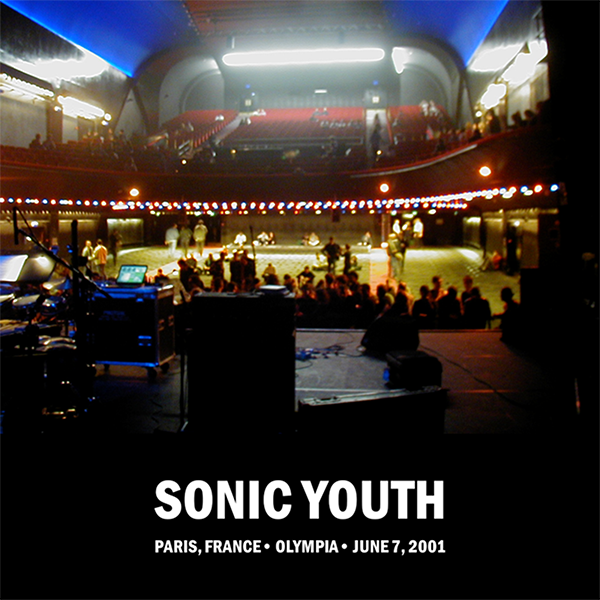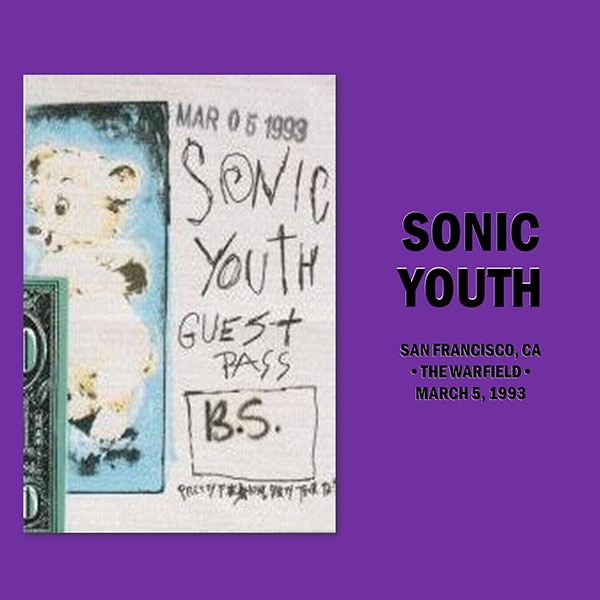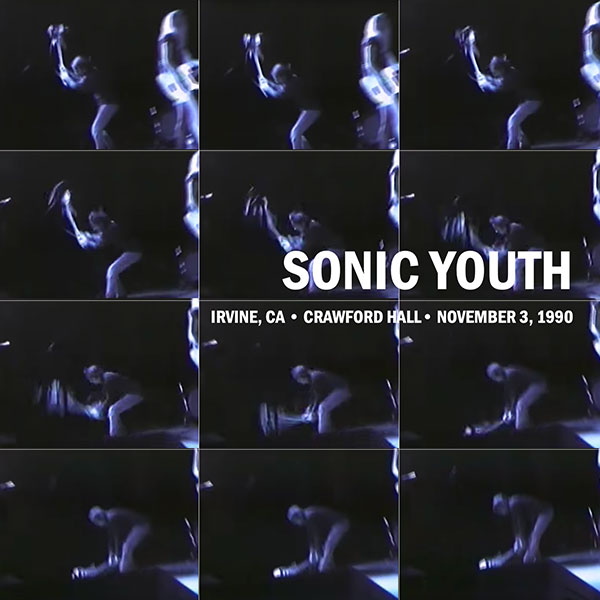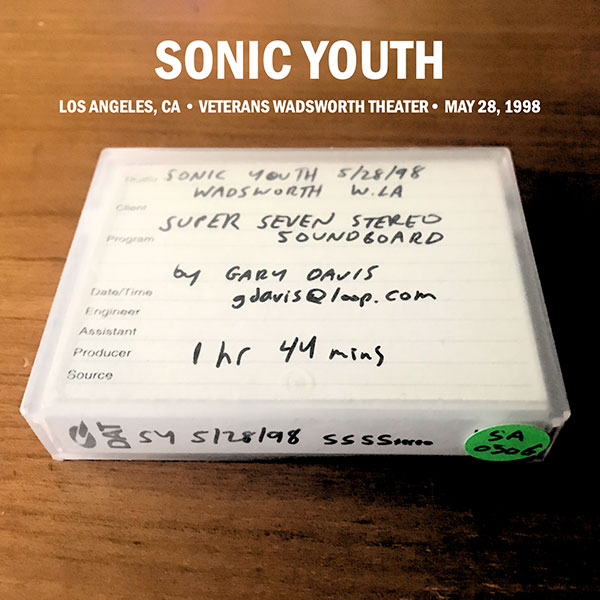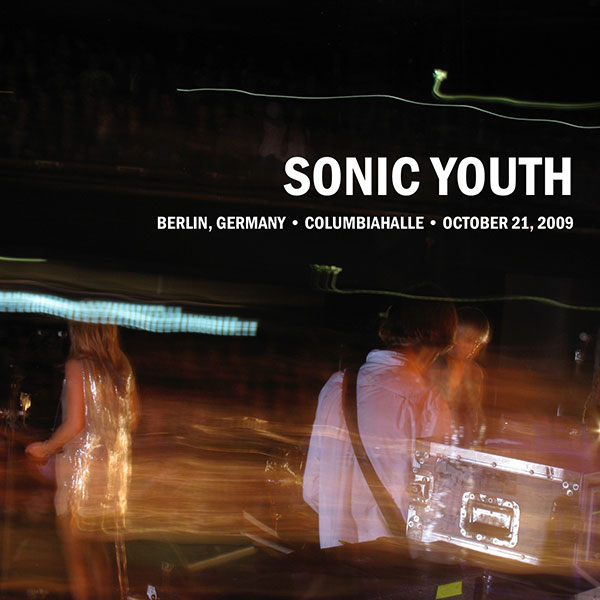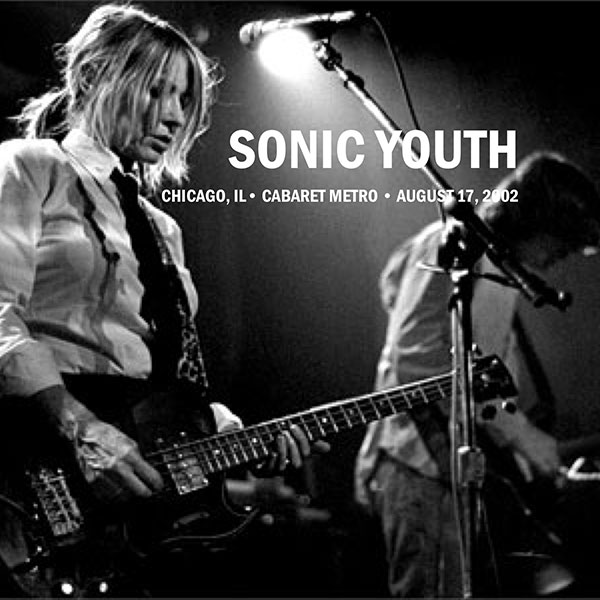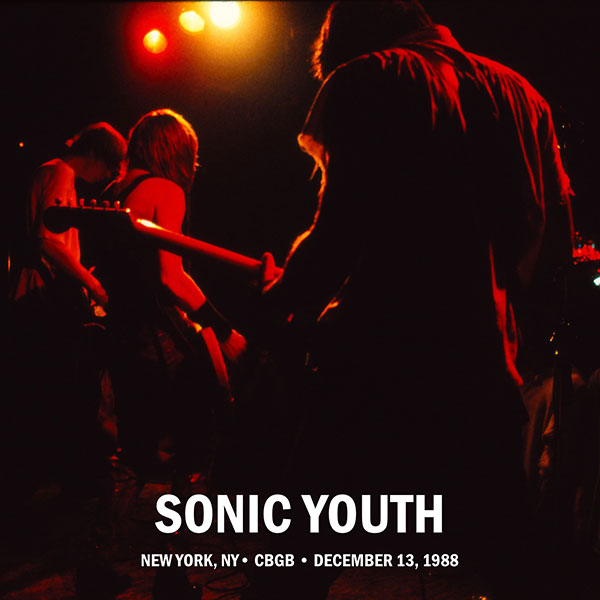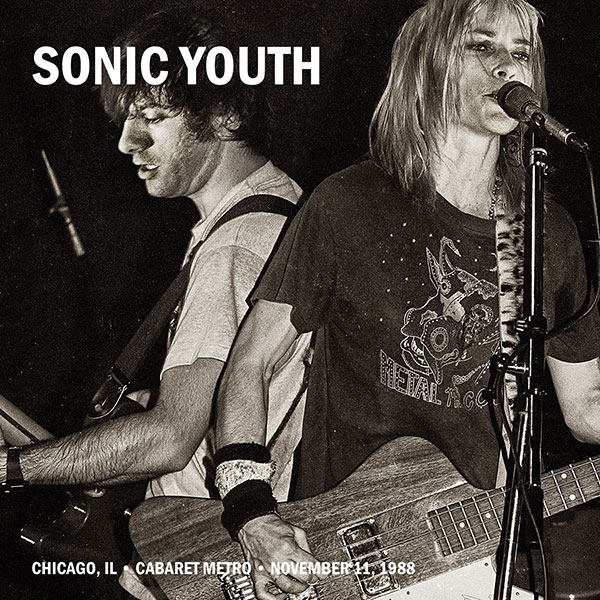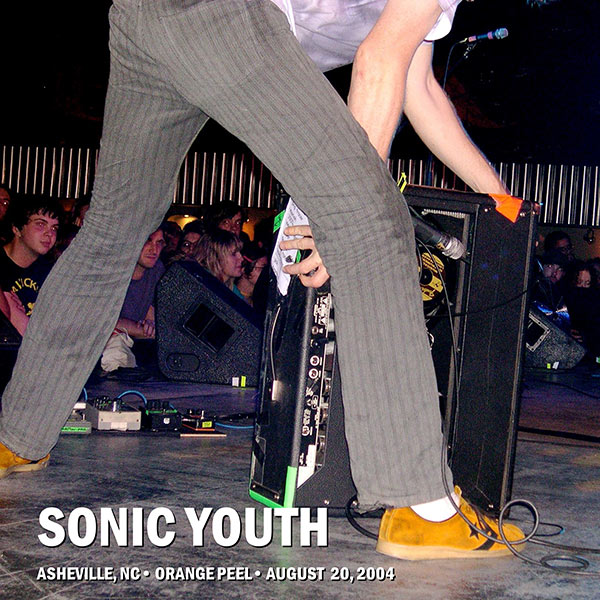Setlist at Veterans Wadsworth Theater Los Angeles, CA on 5/28/1998
Set One
Anagrama
657
Sunday
314
Female Mechanic Now On Duty
448
Karen Koltrane
462
Ineffable Me
321
Hits of Sunshine
743
French Tickler
284
Hoarfrost
407
Wildflower Soul
542
Heather Angel
310
Encore
Encore Break
191
Stil
561
Shadow of a Doubt
213
Death Valley '69
754
Veterans Wadsworth Theater
Los Angeles, CA
5/28/1998
Stream this show and the entire Sonic Youth catalog
Start your free streaming trial today, or Save 50% Now on a year of All Access.
Learn More
$7.95
Setlist at Veterans Wadsworth Theater Los Angeles, CA on 5/28/1998
Set One
Anagrama
657
Sunday
314
Female Mechanic Now On Duty
448
Karen Koltrane
462
Ineffable Me
321
Hits of Sunshine
743
French Tickler
284
Hoarfrost
407
Wildflower Soul
542
Heather Angel
310
Encore
Encore Break
191
Stil
561
Shadow of a Doubt
213
Death Valley '69
754
Show Notes
• Sonic Youth: Kim Gordon, Thurston Moore, Lee Ranaldo, Steve Shelley
• Recorded by: Gary Davis
• Additional Engineering: Aaron Mullan
• Artwork Design: Megan Mermis
1998 and the A Thousand Leaves album released that year are an anomalous era of the Sonic Youth story. It was the first “proper” album made at the band’s own Echo Canyon studio (the first three EP’s of the SYR series had also been made there). The Thousand Leaves material came and went like a singular wave. The song “Sunday” was recorded for the Suburbia soundtrack and debuted live in late 1996, and prototherian versions of other material for the album kicked around in the murky SY year of 1997. Then in 1998 the wave crested: The band played 73 shows, and apart from a couple classics thrown into the encores, the sets consisted entirely of songs developed in those Echo Canyon sessions. The wave receded and by 2000 only “Sunday” was still in setlists, by 2001 even that was gone, and none of the songs were performed again, to the best of my knowledge. Songs from every prior record eventually came back into setlists later on, but these ones were just gone.
At the crest of the wave, it was a little bit baffling for fans; I saw Sonic Youth in Massachusetts a month before this 5/28 show, and it was shocking that the classics had been summarily erased from the set. “Anagrama” from SYR1 was familiar but after that it was all new territory. On the other hand, listening back now to live shows from this era, they are a goldmine of strong performances of this now-classic material, uncluttered by previous “hits” which would have invariably have altered the vibe. Gotta be glad the band had the stones to get onstage and demand the audience Be Here Now. Listening back, we can see the setlist in advance; it’s much easier to be a brave listener retrospectively.
Another unique aspect of this time period of Sonic Youth is the way recording at Echo Canyon had the strange outcome of inverting the typical characterizations of studio vs. live performances. In general, it’s expected that album versions of songs are more “polished” and live versions could be more “raw”. But at Echo Canyon the inmates were running the asylum and everything was upside down. While the band was in the room making sound, it was unclear if they were writing, rehearsing, or recording at any given time. I know this, because by 2000 I was the person sitting in the control room, with the 2” tape machine armed to record, with standing orders to record anything good, but not waste too much tape. Sometimes one of the band members would helpfully shout “Roll Tape!” but otherwise, it was guesswork. Looking at the boxes for the Thousand Leaves reels, all the evidence suggests this is how Wharton Tiers was working too, during those sessions. Eventually it would be determined that some chunk of what had been recorded was a “song” and vocal duties would be assumed by one of the singers.
Bringing this back to 5/28/98: This was the 25th show of the tour, and by now the songs had congealed into specific things. The album versions are casual, almost offhand. But these versions are confident and bold. It’s an illuminating contrast.
This recording was made by Gary Davis, who has a singular approach to taping. I asked him to explain his “Super Seven Stereo Soundboard” approach. He writes:
I could write a whole article about SSSS (in fact I did - it was published in "EQ" magazine), but here is a short explanation:
I used specially-wired cables to grab individual channels from the "Insert" jacks and mixed live to stereo at the venue, using a powerful headphone amp, Etymotic "hear-plugs," and Thunder-29 hearing protectors, to isolate my sound from the venue. (Ironically, I usually listened at a volume well-below the amplified sound in the venue, and I often felt I was the only person in the room who was hearing the sound "clearly" during a performance!) The name "Super Seven" comes from the fact that I originally used 7 or 8 tracks for this process, and the term "Super-8" was already well- overused!
I typically used a cheap plastic battery-powered mixer capable of 10 channels (but only if you positioned them hard left and hard right), but for Sonic Youth I borrowed a small Alesis mixer and I believe this tape has an official designation of SSSS/14 meaning I mixed 14 tracks.
The reason for using Inserts instead of Directs is that Directs on most small boards were post-fader, which meant that FOH and I were working against each other to set levels. From the Insert jacks, I always got constant level (unless the FOH changed the gain/trim, of course!)
"Super Seven Stereo Soundboard" audio can be presented in surround sound - ie "quad" or "DD5.1" The secret is something called "Neural Surround," which is a surround-simulation algorithm developed by the people at THX. It's like "Dolby Pro Logic on Steroids," in that Neural Surround produces uniquely different left and right REAR channels. The reason Neural Surround works particularly well with SSSS mixes, is that Neural looks for sounds that are only or mostly on one channel, to move to the rear. Thus, a lot of sounds that are mostly in the left or right channels in my stereo mix, get moved to the rear channels in the Neural Surround presentation. Of course, this works best if your rear speakers are substantial.
It's not a "planned" surround mix, it just sounds very good. If Sonic Youth is a barrage of psychedelic noise (at times), this brings the psychedelia into the 3rd dimension!
Admittedly I personally have yet to hear this tape in Neural Surround...but as a stereo mix it sounds great. So, it was a natural choice to release in this archival series.
As to the performance: Evaluating studio performances, we tend to listen for “mistakes” which would disqualify a take instead of listening for overall vibe (of course, overcoming this is exactly why SY built Echo Canyon and recorded the album version in the way they did). With live performances most people will give a dropped drumstick or accidentally unplugged guitar a pass. I agree with that, so I don’t think I’ve even listened to this concert with those type of ears on. I think more about the flow of the day, and where in the tour the band is.
The band had just spent four days in San Francisco, this show is in the middle of a week in California toward the end of the first leg of touring behind the record. California, and S.F. and L.A. in particular, were something of a second home for the band; hitting them in full stride, with multiple nights in hotels to call home base, is a sort of ideal setup for a confident but relaxed Major Market vibe. Old friends are there, and the management and record label, so it’s perfect to roll in with weeks worth of shows behind you and no rush to hit crucial record stores/see everyone/eat at the old haunts in the few hours before soundcheck and the other few hours before bus call. To me, this show has a feel like the stakes are high, and the band is confident. It’s a cool combo.
Hopefully you’ll enjoy it,
Aaron Mullan, January 2019

